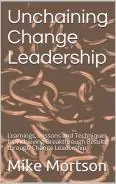
In these unusual circumstances, it has never been more fitting to consider the value of customer loyalty and a customer-centric Supply Chain. Not only has COVID-19 impacted a company’s ability to provide adequate or exemplary customer service levels, but those bound to legacy systems built around silos have found it particularly difficult to quickly respond and adapt.
In a time characterized by chaos and uncertainty, competitive differentiation will be defined by speed, consistency, reliability, and trust. In a practical sense, that means shifting from reactive to proactive, customer-centric supply chains.
For those relying on fragmented processes, an integrated solution is faster and simpler than you think.
Listen to your customers
Ask, and customers will tell you what they want. I built a billion-dollar supply chain services business listening to my network partners. I didn’t have to figure out what to do next or how to improve – they told me. And – not surprisingly – we were rewarded when we delivered on their needs. So, listen to your customers, now more than ever. What are they telling you?
Customers, whether DTC or B2B, want instantaneous access 24/7 to your business; multi-device interaction (PC, mobile); immediate status updates, product inventory availability, order acknowledgement, shipment notifications, visibility into order history; ability to purchase orders online, as well as handle self-service remediation and returns management. With the pandemic forcing everyone online, this “nice to have” need is a “must.”
Once you have the feedback, quickly assess your business processes to prioritize your actions to create a customer-centric Supply Chain.

Are disjointed processes standing in your way?
If disjointed processes are in the way, you’re not alone.
With the imperative to be best-in-class at all things, a company might have SAP or Oracle as its system of record to act as the “single version of the truth,” as well as a separate CRM solution, like Zendesk; a separate warehouse management system, like Manhattan Associates; a talent management platform, like WorkDay; an eCommerce storefront, like Shopify; a separate tax calculator, as Avalara; and IFS for returns management.
You get the picture.
Silos are formed because these systems aren’t easily interconnected – they’re designed as proprietary. What results is a patchwork of applications plugged into the system of record, linked through third-party connectors and middleware.
However, bringing forward these customizations to new ERP releases is costly and complex, the system of record typically remains at a down-level version, lacking new feature sets and support, and ultimately limiting visibility, speed, and flexibility.
It’s a monolithic mess – and one that’s actively perpetuated. After years of investment into this institutional legacy, companies become unintentionally protective over their tribal knowledge and often double down on their support for the status quo.
Can processes be improved and automated?
Definitely!
Digital transformations are often associated with the notion of “boiling the ocean.” But you don’t always need to upend the organization to make a radical difference. Fast-track supply chain orchestration platforms take your collection of applications and make them work as one.
Orchestration platforms offer a ready-to-use user interface with APIs that leverage disparate systems’ various touchpoints. Because it’s connective and leverages the investments already in place, the technology is comparatively quicker and easier to deploy and also less expensive than transformative overhauls.
Bolstering your supply chain’s “connective tissue” enables visibility and foresight into the flow of information, physical goods, and associated financial transactions. Supply chain visibility provides company- and network-wide transparency, so customers get the immediate alerts they need to manage exceptions, deploy contingencies, avoid surprises, and identify accountability.
Visibility is equally necessary to seamless and cost-effective returns management, where quick resolution is more than an expectation – it’s a requirement. Visibility provides data on the expected receipts, diagnosis, and the triaging required to settle issues fast.
Become unified and multi-faceted!
Data is knowledge, and knowledge is power. When data remains isolated and unutilized in each siloed point solution, companies are left ineffective.
If you’re fairly digitized, youprobably don’t need an overhaul. The potential is already there, it’s just a matter of tapping into it by centralizing your data, so you can access it simpler and act on it faster.
Such a unified, holistic approach also allows your ecosystem to ebb and flow with the needs and wants of your customers and suppliers as conditions change. Remember, your business should be growing at least as fast as your major customers, and, as these past few months have shown, being fast on your feet ensures staying in the game.
The Customer-Centric Supply Chain
Supply chain orchestration platforms are a powerful multi-enterprise business network technology that offer a ready-to-use interface that connects disparate systems for end-to-end visibility and control and optimized order and logistics management. Ready to maximize both customer satisfaction and operational excellence with a customer-centric Supply Chain model?

